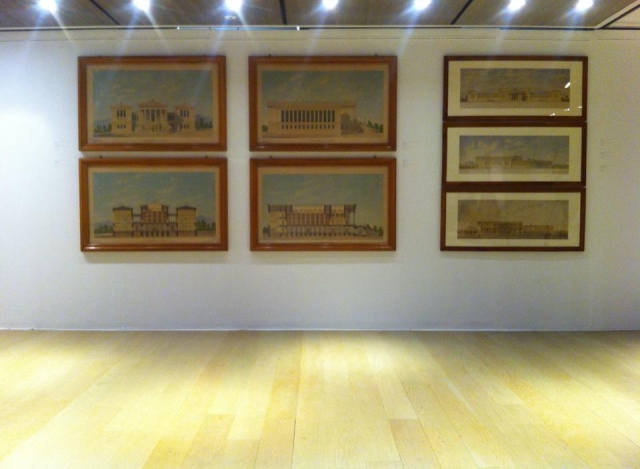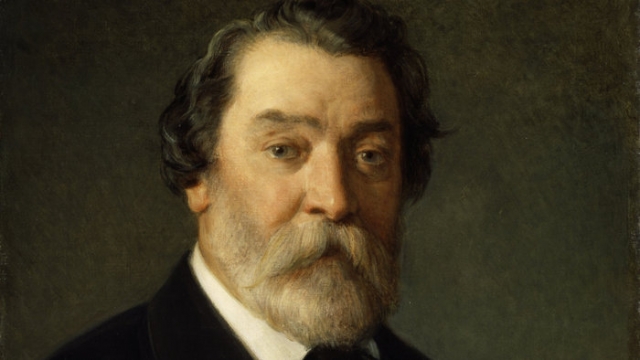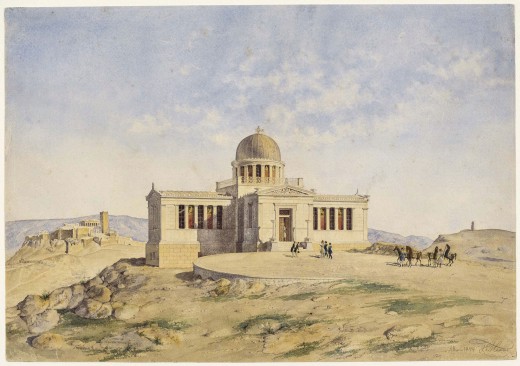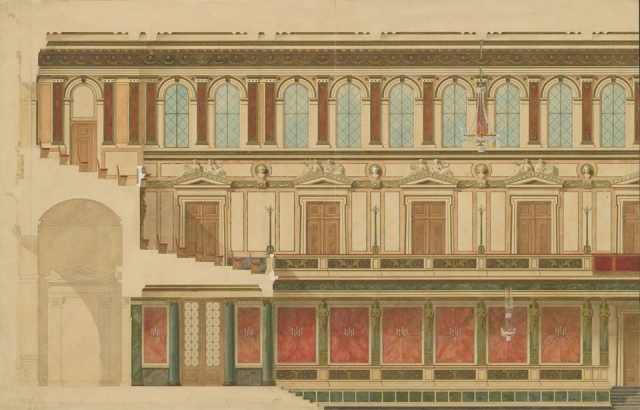Photos: kathimerini.gr, lifo.gr
Anastasia Balezdrova
The National Library, the University of Athens and the Academy of Athens are not among the most famous buildings but they certainly are emblematic of the Greek capital. They form a different architectural appearance of the Greek capital that is famous for its ancient monuments, giving it a slightly Renaissance appearance.
Known as the "Athenian neoclassical trilogy", the buildings on Panepistimiou Street are the work of Danish architect and representative of neoclassicism Theophil Hansen. The university building is considered to be the work of his brother Christian Hansen, but specialists in the history of art are of the opinion that Theophil played a significant role in the project.
His contribution to the creation of the new appearance of Athens after the announcement of the Kingdom of Greece in 1832 is presented in an exhibition entitled "Hellenic Renaissance: the architecture of Theophil Hansen" that is on display at the B&M Theocharakis Foundation for Fine Arts and Music in the Greek capital.

"Hellenic Renaissance" is his expression. He used it despite the fact that there was no renaissance here during the period of Ottoman rule," says Marilena Kasimati, the curator of the exhibition and a specialist in the history of art at the National Gallery of Greece.
The exhibition contains over 120 sketches, drawn in pencil, watercolours and other means that present the projects of Hansen’s works in Athens and Vienna.

Theophil Hansen was born in 1813 and studied in Copenhagen. He arrived in Athens in 1837 in violation of the terms of the grant that he had received to be trained by famous German architect Karl Friedrich Schinkel. Theophil came to his brother Christian, who was in Greece as a civil servant of Austria. The task of Christian and his colleagues was to rebuild the ruins of the Acropolis and other ancient temples.
"Thanks to the sketches and drawings by Christian we have an idea of how the ancient monuments and their surroundings looked at the time. We can thus see the mosque in the Parthenon, which was later demolished and the church of St. George in the ancient temple Thiseio," said Kasimati. Later Theophil used many of the details that still keep their original colours in the decoration of the buildings designed by him. The Erechtheum temple of the Acropolis served as a model for the erection of the Athens Academy.
The first work of 29-year-old Hansen at the time was the house of wealthy Athenian Antonios Dimitriou. It was built on the corner opposite the building of the Greek Parliament today, which was the royal palace at that time. The house is not preserved. Today the Grande Bretagne Hotel is located in its place but architects have however preserved much of the details of Hansen’s work. According to the curators of the exhibition, shaping Syntagma Square on two levels was his work as well.
His next work was the National Observatory. Like the majority of the public buildings, it was funded by George Sinas, the founder of one of the wealthiest banker families in Europe at the time.

What instigated the creation of an observatory since Athens lacked buildings that were considered as greatly needed? "Firstly, to determine time, which was perceived in a very relative way until then. And secondly, to make weather forecasts in support of shipping, because it was believed that it would boost the Greek economy".
Next was the project for the Catholic Church "St. Dionysius the Areopagite" and the Academy of Athens which was built on Sinas’ idea to restore the Platonic Academy of antiquity. The building was the only one built entirely of marble. "The marble is from the quarry on Pendeli Mountain, which opened for the first time after the construction of the Acropolis," said Kasimati.

According to her, the trilogy can be perceived as pentalogy, along with the Catholic Church and the adjacent ophthalmic clinic. It is considered the work of Christian Hansen too, but as Marilena Kasimati stated, "In history of art there rarely are architects who have created only one significant building. My guess is that Theophil had helped him a lot in this project too."
An interesting fact is that Hansen worked in Athens and Vienna in parallel. This was possible thanks to his successful collaboration with his disciple, Ernst Ziller, who supervised the implementation of several of his projects in the Greek capital.
Hansen is one of the most prominent representatives of neoclassicism and this is evident in all his works. The building of the Austrian Parliament is one of the landmarks of Vienna even today and it is in fact almost identical to the Athens Library. For him, the harmony and compatibility of all elements were crucial.

The Concert Hall in Vienna that traditionally houses the New Year's concert of the Vienna Philharmonic is also the work of Theophil Hansen as well as the interior decoration, down to the minutest detail.

The Golden Hall, where this year's concert took place, is impressive for the golden figures of the caryatids inspired by Ancient Greece.